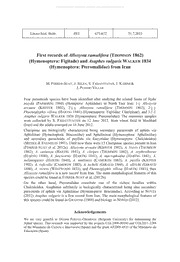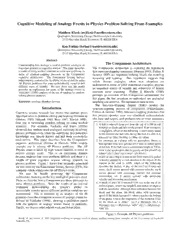
DTIC ADA470406: Cognitive Modeling of Analogy Events in Physics Problem Solving From Examples PDF
Preview DTIC ADA470406: Cognitive Modeling of Analogy Events in Physics Problem Solving From Examples
Cognitive Modeling of Analogy Events in Physics Problem Solving From Examples Matthew Klenk (m-klenk@northwestern.edu) Qualitative Reasoning Group, Northwestern University 2133 Sheridan Road, Evanston, IL 60208 USA Ken Forbus (forbus@northwestern.edu) Qualitative Reasoning Group, Northwestern University 2133 Sheridan Road, Evanston, IL 60208 USA Abstract The Companions Architecture Understanding how analogy is used in problem solving is an important problem in cognitive science. This paper describes The Companions architecture is exploring the hypothesis a model of using worked solutions to solve new problems, in that structure-mapping operations (Gentner 1983; Forbus & terms of structure-mapping processes in the Companions Gentner 1997) are important building blocks for modeling cognitive architecture. The Educational Testing Service reasoning and learning. This hypothesis suggests that independently evaluated the flexibility of the system by using within domain analogies, where new situations are AP Physics problems that were systematically varied to test understood in terms of prior understood examples, provide different types of transfer. We also show that the model an important source of breadth and robustness of human provides an explanation for many of the analogy events in common sense reasoning. Forbus & Hinrichs (2006) VanLehn’s (1998) analysis of the use of analogy by students solving physics problems. provides an overview of the Companions architecture; for this paper, the key processes to understand are analogical Keywords: Analogy; Problem Solving matching and retrieval. We summarize each in turn. The Structure-Mapping Engine (SME) models the Introduction structure-mapping process of comparison (Falkenhainer, Cognitive science research has shown that analogy plays Forbus, & Gentner 1989). Structure-mapping postulates that important roles in problem solving and learning (Gentner & this process operates over two structured representations Gentner, 1983; Holyoak 1985; Ross 1987; Novick 1988). (the base and target), and produces one or more mappings, One role is facilitating problem solving by using worked 1. A ball is released from rest from the top of a 200 m tall solutions. For example, VanLehn and Jones (1993a) building on Earth and falls to the ground. If air resistance observed that students used analogical reasoning in solving is negligible, which of the following is most nearly equal physics problems even when the underlying first principles to the distance the ball falls during the first 4 s after it is knowledge was already known and had been successfully released? (a) 20m; (b) 40m; (c) 80m; (d) 160m. used before. This paper describes how the Companions 2. An astronaut on a planet with no atmosphere throws a cognitive architecture (Forbus & Hinrichs 2006) models ball upward from near ground level with an initial speed example use in solving AP Physics problems. The AP of 4.0 m/s. If the ball rises to a maximum height of 5.0 m, Physics exam is taken by high school students in order to what is the acceleration due to gravity on this planet? (a) receive college credit. This is an interesting domain 0.8m/s2; (b) 1.2m/s2; (c) 1.6m/s2; (d) 20m/s2; because students find such problems difficult and there is a 3. A box of mass 8kg is at rest on the floor when it is pulled wealth of prior cognitive science solving research on vertically upward by a cord attached to the object. If the physics problem. Figure 1 shows four examples generated tension in the cord is 104N, which of the following for this work by the Educational Testing Service (ETS), the describes the motion, if any, of the box? (a) It does not company which administers the AP Physics exam. move; (b) It moves upward with constant velocity; (c) It We start by briefly reviewing the Companions moves upward with increasing velocity but constant architecture, focusing on the key analogical processes used. acceleration; (d) It moves upward with increasing Then, we describe how a Companion uses these processes to velocity and increasing acceleration. 4. A block of mass M is released from rest at the top of an solve physics problems. Next, the results of an external inclined plane, which has length L and makes an angle q evaluation demonstrating the system’s ability to with the horizontal. Although there is friction between the successfully transfer across different problem variations are block and the plane, the block slides with increasing summarized. This is followed by an analysis of the 90 speed. If the block has speed v when it reaches the bottom problems from this evaluation in terms of analogy events (as of the plane, what is the magnitude of the frictional force defined by VanLehn (1998)), showing a qualitative match on the block as it slides? (a) f = Mgsin(q); (b) f = with the patterns of analogy events found in protocols. Mgcos(q); (c) f = MgLsin(q)- ½Mv2 ;(d) f = [MgLsin(q)- Finally, we discuss other related work and future plans. ½Mv2]/2. Figure 1: Example AP Physics problems Klenk, M. and Forbus, K. 2007. Cognitive modeling of analogy events in physics problem solving from examples. In The Proceedings of CogSci-07. Nashville, TN. Report Documentation Page Form Approved OMB No. 0704-0188 Public reporting burden for the collection of information is estimated to average 1 hour per response, including the time for reviewing instructions, searching existing data sources, gathering and maintaining the data needed, and completing and reviewing the collection of information. Send comments regarding this burden estimate or any other aspect of this collection of information, including suggestions for reducing this burden, to Washington Headquarters Services, Directorate for Information Operations and Reports, 1215 Jefferson Davis Highway, Suite 1204, Arlington VA 22202-4302. Respondents should be aware that notwithstanding any other provision of law, no person shall be subject to a penalty for failing to comply with a collection of information if it does not display a currently valid OMB control number. 1. REPORT DATE 3. DATES COVERED 2007 2. REPORT TYPE 00-00-2007 to 00-00-2007 4. TITLE AND SUBTITLE 5a. CONTRACT NUMBER Cognitive Modeling of Analogy Events in Physics Problem Solving From 5b. GRANT NUMBER Examples 5c. PROGRAM ELEMENT NUMBER 6. AUTHOR(S) 5d. PROJECT NUMBER 5e. TASK NUMBER 5f. WORK UNIT NUMBER 7. PERFORMING ORGANIZATION NAME(S) AND ADDRESS(ES) 8. PERFORMING ORGANIZATION Northwestern University,Qualitative Reasoning Group,2133 Sheridan REPORT NUMBER Road,Evanston,IL,60208 9. SPONSORING/MONITORING AGENCY NAME(S) AND ADDRESS(ES) 10. SPONSOR/MONITOR’S ACRONYM(S) 11. SPONSOR/MONITOR’S REPORT NUMBER(S) 12. DISTRIBUTION/AVAILABILITY STATEMENT Approved for public release; distribution unlimited 13. SUPPLEMENTARY NOTES 14. ABSTRACT Understanding how analogy is used in problem solving is an important problem in cognitive science. This paper describes a model of using worked solutions to solve new problems, in terms of structure-mapping processes in the Companions cognitive architecture. The Educational Testing Service independently evaluated the flexibility of the system by using AP Physics problems that were systematically varied to test different types of transfer. We also show that the model provides an explanation for many of the analogy events in VanLehn?s (1998) analysis of the use of analogy by students solving physics problems. 15. SUBJECT TERMS 16. SECURITY CLASSIFICATION OF: 17. LIMITATION OF 18. NUMBER 19a. NAME OF ABSTRACT OF PAGES RESPONSIBLE PERSON a. REPORT b. ABSTRACT c. THIS PAGE Same as 6 unclassified unclassified unclassified Report (SAR) Standard Form 298 (Rev. 8-98) Prescribed by ANSI Std Z39-18 each representing a construal of what items (entities, representation conventions used were established in expressions) in the base go with what items in the target. collaboration with us and with Cycorp, the creators of the This construal is represented by a set of correspondences. ResearchCyc KB contents. ETS then generated all Mappings also include a score indicating the strength of the problems and worked solutions using templates, which were match, and candidate inferences which are expressions from not available to us. the base which, while unmapped in their entirety, have subcomponents that participate in the mapping’s Example Problem and Worked Solution correspondences. SME operates in polynomial time, using a Figure 2 shows part of the 37 facts used to represent greedy algorithm (Forbus & Oblinger 1990). Problem 2 from Figure 1. The worked solutions were MAC/FAC (Forbus et al. 1994) models similarity-based created at roughly the level found in textbooks. They are retrieval given a case of facts, or probe, and a large case not deductive proofs, nor problem solving traces in the library. The first stage, using a special kind of feature language of our solver. This is important, because it vector automatically computed from structural descriptions, provides more opportunities for the system to learn (and to rapidly selects a few (typically three) candidates from the make mistakes). For Problem 2 from Figure 1, the worked case library. The second stage uses SME to compare these solution consisted of 7 steps. candidates to the probe, returning one candidate reminding 1. Categorize the problem as distance-velocity problem (or more, if they are very close) for the probe. under constant acceleration As performance systems, both SME and MAC/FAC have 2. Instantiate the distance-velocity equation (V2 = V2 – f i been used successfully in a variety of different domains, and 2ad) as cognitive models, both have been used to account for a 3. Given the projectile motion and lack of atmosphere, variety of psychological results (Forbus 2001). infer that the acceleration is equal to the acceleration due to gravity (a = g) Solving Problems by Worked Solutions 4. Because of the projectile motion event, the bat is not As noted above, students commonly use analogies with moving at the maximum height (V = 0 m/s) f worked solutions to solve physics problems. Our 5. Solve the equations for the acceleration due to Companion’s model starts with some basic mathematical gravity (g = -1.6 m/s2) skills, a broad common sense ontology and some qualitative 6. Sanity check the answer (the answer is consistent) mechanics, representing the background knowledge that a 7. Select the appropriate multiple choice answer (“c”) student might bring to such problems. The representations (stepType Step3 DeterminingValueFromContext) use the ontology of the ResearchCyc knowledge base, plus (stepUses Step3 (isa Throwing-1 ThrowingAnObject)) our own extensions. ResearchCyc is useful because it (stepUses Step3 (occursNear Throwing-1 Ground-1)) includes over 30,000 distinct types of entities, over 8,000 (stepUses Step3 relationships and functions, and 1.2 million facts (no-GenQuantRelnFrom constraining them. Thus, everyday concepts like in-ImmersedFully Planet-1 Atmosphere)) “throwing” and “ball” are already defined, rather than us (stepUses Step3 (objectMoving Upward-1 Ball-1)) generating them specifically for the purpose of this project. … Unlike many students, our model does not start with any (stepUses Step3 (direction Upward-1 Up-Directly)) knowledge of the equations of physics. All equations and (solutionStepResult Step3 knowledge of when to apply them come from analogies with (valueOf worked solutions, worked through example problems found (AtFn ((QPQuantityFn Speed) Ball-1) in textbooks. While not representative of many students, it (EndFn Upward-1)) provides an interesting extreme assumption for measuring (MetersPerSecond 0))) the power of analogy in its purest form. The problems and worked solutions used throughout this Figure 3: Problem 2 Worked Solution Step 3 work were generated by the Educational Testing Service, Figure 3 illustrates how step 3 is represented. Worked the company which administers the AP Physics exam. The solutions are stored along with the problem description as a case in the Companion’s case library, so they are available (groundOf Planet-1 Ground-1) when solving new problems. (performedBy Throwing-1 Astronaut-1) (no-GenQuantRelnFrom Solving Problems via Analogy in-ImmersedFully Planet-1 Atmosphere) Problems are presented as cases. The first phase of problem (eventOccursNear Throwing-1 Ground-1) solving is to generate an analogy with a relevant example. (objectThrown Throwing-1 Ball-1) This is done in three steps. First, the Companion uses (querySentenceOfQuery Query-1 MAC/FAC to try to retrieve a worked solution from the case (valueOf (AccGravityFn Planet-1) Acc-1) library, using the problem as the probe. The mapping is … examined to see whether or not it includes all of the Figure 2: Part of Problem 2 representation problem’s event structure, i.e., the physical events described Klenk, M. and Forbus, K. 2007. Cognitive modeling of analogy events in physics problem solving from examples. In The Proceedings of CogSci-07. Nashville, TN. in the problem, such as motion. If not all events are consistent answer choice in a qualitative behavior problem, mapped, MAC/FAC is used again, but with only the such as Problem 3 in Figure 1. unmapped events as the probe. This process continues until either there is no more unmapped event structure or no more Experimental Results matches are found. The result is one or more examples that ETS conducted a formal evaluation of the system’s problem should provide relevant facts about the new problem, solving performance, and we collected additional including equations. Problem solving proceeds by mining information on analogy events afterwards. ETS presented the candidate inferences of these mappings. quizzes and worked solutions to a Companion running on a The system begins by using rules to categorize the cluster remotely. The format of the questions mirrors the problem and determine which quantity or quantities should Chi et al. (1989) study by looking at problem solving over be solved for. (In Problem 3, for example, determining systematic variations of mechanics problems. The Chi et al. which answer is consistent requires finding values for study involved giving the subjects worked solutions of three velocity and acceleration.) Values for quantities are found different problem types and then testing them on four in three ways. (1) The value might already be known as part isomorphic problems of each type followed by a second set of the problem. (2) The candidate inferences of the of problems from the same chapter but not isomorphic. mapping may contain a solution step in which the goal First, we describe the ETS evaluation of the system over parameter was assumed in the worked solution. (3) The systematic variations of problems, called here transfer candidate inferences provide an equation containing the levels. Then, we compare the distribution of the analogy sought quantity. In this case, the system first looks for events in this study to those reported by VanLehn’s (1998) values for the other quantities in the equations, and then analysis of the Chi et al. protocols. attempts to solve the equation for the original parameter. The algebra routines are straightforward, based on the Problem Solving Across Transfer Levels system in Forbus & de Kleer (1993). We currently treat the Our study involved having five worked examples of each of mathematical operations involved in solving a problem as a the four different problem types for a total of 20 problems in black box, not subject to learning. memory. Then the system was presented quizzes of To determine whether or not a solution step suggested by systematic variations of problems representing different candidate inferences is valid, the system checks its context transfer levels as follows1: in the worked solution. Suppose for example the step 1. Parameterization: changing the parameter values, but assumes that the acceleration of a rock in free fall is 10 m/s2, not qualitative outcome because the rock is falling on Earth and the problem says to 2. Extrapolation: changing the parameters such that the ignore air resistance. To apply this step, the system must be qualitative outcome changes as well able to infer that there is no air resistance in the current 3. Restructuring: asking for a different parameter situation and that the event occurs on Earth. This 4. Extending: including distracting information verification helps guard against inappropriate applications 5. Restyling: changing the types of everyday objects of solution steps. involved Before selecting a multiple choice answer, the system 6. Composing: requiring concepts from multiple searches the candidate inferences for any solution steps problems representing sanity checks. For example, a problem asking, The problems and their worked solutions were created by “How far would a ball fall off a 200m building in 4s?” ETS in collaboration with Cycorp. The authors saw less would have a sanity checking step in which the answer, than half of the transfer problems prior to the evaluation. 80m, was compared to the height of the building, 200m. Each transfer level (TL) contained 5 problem variations of Since the answer is less than the height of the building, the each type making 20 total problems per TL. TL-2 only result of the step is that the ball fell 80 meters. When this contained 10 problems because two of the problem types worked solution is used in solving future problems, the could not be altered to produce qualitatively different analogy produces candidate inferences indicating the type of outcomes, Problems 2 and 4 from Figure 1. In each transfer check and corresponding quantities in the current problem level, every problem had a transformation based upon the that are involved. Currently, we only employ this check if transfer level to a specific worked example in memory. The the quantity sought for is involved in the comparison. This data presented here is a representative subset of the whole is because it is clear how to resolve a failure, i.e. use the evaluation, which also investigated learning rates. value compared against it instead, because it constitutes a Table 1 presents the system’s performance by transfer limit point (Forbus 1984) for that situation. This is a level. The significance is computed against random chance reasonable heuristic for Mechanics but in other situations on a 4 option multiple choice test. Given the fact that this and domains what to do is much less clear, and we plan to evaluation was conducted externally on unseen problems learn rules for resolving such problems in the future. After an answer is found to be consistent, it is compared 1 These levels are from a 10-level catalog of transfer tasks used in against each of the answer choices. The system selects DARPA’s Transfer Learning Program either the closest answer for quantity value questions or the (http://fs1.fbo.gov/EPSData/ODA/Synopses/4965/BAA05-29/BAA05- 29TransferLearningPIP.doc) Klenk, M. and Forbus, K. 2007. Cognitive modeling of analogy events in physics problem solving from examples. In The Proceedings of CogSci-07. Nashville, TN. Table 1: Accuracy Results • Initialization events – the subject sets up a mapping between the examples and the problems. Transfer Level (# of problems) Percentage Correct • Transfer events – the subject infers something about the 1 – Parameterization (20) 90% (p<.05) solution from an example. These events were further 2 – Extrapolation (10) 50% (p<.10) divided by the type of inference made: 3 – Restructuring (20) 25% (p=.58) 1. Line: The subject transferred a whole equation, 4 – Extending (20) 90% (p<.05) vector, or diagram. 5 – Restyling (20) 95% (p<.05) 2. Part of a line: The subject transferred a detail 6 – Composing (20) 45% (p<.05) from a line, such as whether a projection function was sine or cosine, or whether a vector went up or and our analysis of its errors, the system performed quite down. well. Four out of the six transfer levels were statistically 3. Search control: The subject made the decision on significant (p<.05). For TL-1, TL-4, and TL-5, the system what steps to do by consulting the example and scored at least 90% correct. Our rates were not as high for seeing what steps it did. the other levels; TL-2 was 50%, TL-3 was 25%, and TL-6 4. Checking: The subject decided whether their most was 44%. Even when the system failed to produce the recent action or decision was correct by correct answer, the retrieval algorithm always selected the consulting the example. correct problem or problems to reason from. This mirrors 5. Failure: The subject failed to find anything useful the findings of VanLehn and Jones (1993b) where human during this transfer event. subjects rarely referenced examples that were not maximally Initialization events were indicated by the subject flipping similar to the problem. the book to a worked solution, reading some of the example While the results on three of the levels illustrate the strengths of the analogical approach, there are some results and deciding if it will be useful to solve the current problem. that require more explanation. First, in TL-2, the VanLehn found that initialization events usually occur at the beginning of the problem solving, consistent with (Bassok representations concerning the worked solution for problem & Holyoak 1989; Faries & Reiser 1988; Ross 1989). type 3 incorrectly formulate the sanity checking step in Most of these events can easily be mapped to our model. which if a negative acceleration is calculated, the In our model, initialization events occur at the beginning of acceleration is inferred to be zero. We were unable to problem solving when the system uses MAC/FAC to correct this given the external nature of the evaluation. The retrieve a similar example(s) from memory. Our use of errors in TL-3 and TL-6, where the Companion was unable to score above 50 percent on any of the quizzes, were due to recursive retrievals for complex analogs is consistent with limitations in the problem solver’s strategies. For Problem VanLehn’s finding that for complex problems, there could Type 3, the solver did not handle substituting different be multiple initialization events. Because our model answers all problems using analogy, it parameter values for answer choices efficiently enough to relies heavily on what would be construed as transfer events prevent timeouts. The low scores on TL-6 are because the in VanLehn’s analysis. Line transfers are indicated in our solver’s strategies assume that a given problem either model in two ways: (1) Using a candidate inference to map demands numerical values or symbolic values, but not both, an equation from the worked solution onto the problem and and thus it could not handle a composition of a symbolic problem with a numerical problem. Given the system's (2) inferring parameter values from the problem situation. focus on transferring domain knowledge, it could not Consistent with VanLehn’s findings, these events occur overcome these problems. Future work in learning problem throughout the problem solving process. While similar in some ways, there are deep differences solving strategies and interactivity is motivated by these between our model and Cascade. In Cascade, line transfer results. events are only used when rule-based reasoning reaches an Analysis of Analogy Events impasse. Cascade modeled analogical search control by storing triples containing the problem, goal, and the rule Chi et al. (1989) collected verbal protocols from 9 subjects used to achieve the goal. The triples represent an learning Newtonian Mechanics while they studied worked approximation of episodic memory. When the system faced examples and solved a series of problems. These protocols search control decisions in the future, it would look for a were used to investigate the differences between good and similar goal in memory and follow that rule. By contrast, poor problem-solvers, including creating the Cascade our model uses domain-independent processes (structural system, which modeled the self-explanation effect alignment and similarity-based retrieval) to import (VanLehn et al. 1992). When attempting to fit Cascade to information from the worked solution into the current this data, VanLehn and Jones (1993) observed that people problem. used analogical reasoning even they could have used first- The other transfer events are modeled incompletely. Our principles knowledge. Later, VanLehn (1998) reanalyzed model does not have anything corresponding to part-of-line the original protocols, leading to a new taxonomy of transfers. In any case, these events are extremely rare, analogy events: accounting for just 3% of all transfer events in the protocols. Klenk, M. and Forbus, K. 2007. Cognitive modeling of analogy events in physics problem solving from examples. In The Proceedings of CogSci-07. Nashville, TN. The closest analog to search control is deciding to use a noted even more of these types of events per problem, retrieved equation. Checking in our model corresponds to indicates that a more complete model of these analogy using a sanity check. Transfer failures are indicated when a events could lead to more robust problem solving. precondition test fails, blocking the use of a candidate inference. Related Work Given these differences, a quantitative comparison of the A number of prior analogical problem solving models, number of different analogy events would not be including PHINEAS (Falkenhainer 1990), Melis and informative. However, in addition to the consistencies Whittle's inductive theorem prover (1999), and Klenk et al.'s noted above, we would expect there to be a qualitative everyday physical reasoning (2005), import and adapt the pattern of consistency. That is, we would expect that our entire solution of the example to the current problem. Other model will predict more line transfer events than observed systems such as Cascade (VanLehn 1998) and ACT-R in protocols, since it is at the extreme poverty end of (Anderson 1993) use analogy primarily to overcome assumptions about initial knowledge. Second, analogical impasses in rule-based reasoning. Finally, there are systems search control is done implicitly in our system; therefore our such as Eureka (Jones 1989), derivational analogy in system has no explicit search control events. Third, we Prodigy (Veloso & Carbonell 1993), and APSS (Ouyang & believe our model to be incomplete in terms of modeling Forbus 2006) that use analogy to improve efficiency. sanity checking and transfer failures; therefore we expect to see fewer such events than in protocols. Discussion and Future Work Table 2: Analogy Events per Problem We have shown how the Companions architecture can be Event Type Companion’s Problems Protocols used to model the use of analogy with worked solutions to Correct Failed Total (n=24) solve AP Physics problems. We do not know of any other (n=64) (n=36) (n=90) model which has been subjected to this kind of independent Initialization 1.12 1.16 1.13 1.2 evaluation over this range of systematic variations in Transfer 6.72 9.39 6.72 4.9 problem types, as well as having a reasonable qualitative fit Line 6.13 9.33 7.18 2.6 to human protocol data. We find this very encouraging. (91%) (99%) (95%) (54%) However, the material we have tested it on only represents Checking .47 .03 .33 .75 roughly 20% of the material in the Newtonian Mechanics (7%) (<1%) (4%) (15%) portion of the AP Physics exam. Our goal is to expand the Failure .12 .03 .09 .38 model where it can learn all of the material needed to solve (2%) (<1%) (1%) (8%) AP Physics exams. Other N/A N/A N/A 1.17 Three investigations are planned to achieve this goal. (1) (24%) Generalization from multiple analogies is an important aspect of human problem solving and in transitioning from Table 2 illustrates the number of analogy events by type novice to expert (Elio & Scharf 1990; Rieman et al. 1993; per problem. The “Other” event type contains the analogy Kotovsky & Gentner, 1996). Therefore, we plan to events not modeled by our system, including search control construct generalizations using on SEQL (Kuehne et al. and part of line transfer as well as the miscellaneous events 2000), a structure mapping account for generalization and from the protocols. The Companion’s analogy events are categorization, to facilitate the system’s ability to apply its further divided depending on if the problem in which the knowledge more broadly. For example, equations might be event occurred was solved correctly. Also, percentages of learned as encapsulated histories (Forbus 1984), which total transfer events are supplied next to each transfer event being parameterized could be used to model first principles in each condition. reasoning. (2) As our system gains more domain Our results have a reasonable qualitative fit with knowledge, it will be necessary to extend our model to VanLehn’s human protocols. VanLehn summarized the include analogical search control events. For this, we plan results concerning type of information transferred in the on incorporating the analogical search control mechanism protocols by saying “The basic result is simply that most used in APSS (Ouyang & Forbus 2006). (3) As Chi et al. students, both Good and Poor, transferred whole lines from (1981) note, one difference between novices and experts the example to the problem” (1998, p. 364). Our system appears to be their encoding strategies. Consequently, we was even more dependent on line transfers for problem plan to explore methods for learning new encoding solving due to the fact that the vast majority of the domain strategies, to capture this ability to move more directly from knowledge used to solve these problems came from the everyday world to models that can be used to solve examples. The majority of the “Other” transfers were problems. search control events, which motivates us to focus on search control events in our future work. While our model’s sanity Acknowledgments checking and failed transfer events are incomplete, both of these occurred more frequently on correctly solved This research was supported by DARPA. We thank problems. This, in addition to the fact that the protocols Cynthia Matuszek, Blake Shepard, and Casey McGinnis for Klenk, M. and Forbus, K. 2007. Cognitive modeling of analogy events in physics problem solving from examples. In The Proceedings of CogSci-07. Nashville, TN. their work representing the problems and the worked Gentner, D., & Gentner, D. R. (1983). Flowing waters or solutions. We thank Patrick Kyllonen, Catherine Trapani, teeming crowds: Mental models of electricity. In D. and Vincent Weng at ETS for providing the testing Gentner & A. L. Stevens (Eds.), Mental models (pp. 99- materials and administering this experiment. 129). Hillsdale, NJ: Erlbaum. Jones, R. (1989). A model of retrieval in problem solving. References Unpublished Doctoral Dissertation, University of California at Irvine, Irvine, CA. Anderson, J. R. (1993). Rules of the Mind. Hillsdale, NJ: Holyoak. K.J. (1985). The pragmatics of analogical transfer. Lawrence Erlbaum Associates. In G.H. Bower (Ed.), The psychology of teaming and Bassok, M., & Holyoak, K. J. (1989). Interdomain transfer motivation. (19). New York: Academic. between isomorphic topics in algebra and physics. Klenk, M., Forbus, K., Tomai, E., Kim,H., and Kyckelhahn, Journal of Experimental Psychology: Learning, Memory, B. 2005. Solving everyday physical reasoning problems & Cognition, 15, 153-166. by analogy using sketches. Proceedings of 20th National Chi, M.T.H. (1997). Quantifying qualitative analyses of Conference on Artificial Intelligence (AAAI-05), verbal data: A practical guide. The Journal of the Pittsburgh, PA. Learning Sciences, 6, 271-315. Kotovsky, L., & Gentner, D. (1996). Comparison and Chi, M.T.H., Feltovich, P., & Glaser, R. (1981). categorization in the development of relational similarity. Categorization and representation of physics problems by Child Development, 67, 2797-2822. experts and novices. Cognitive Science, 5, 121-152. Novick, L.R. (1988). Analogical transfer, problem Chi, M.T.H., Bassok, M., Lewis, M. W., Reimann, P., & similarity, and expertise. Journal of Experimental Glaser, R. (1989). Self-explanations: How students study Psychology: Learning, Memory, and Cognition, 14. and use examples in learning to solve problems. Ouyang, T. and Forbus, K. 2006. Strategy variations in Cognitive Science, 15, 145-182. analogical problem solving. Proc. of AAAI-06 Elio, R., & Scharf, P. B. (1990). Modeling novice-to-expert Reimann, P., Wichmann, S., & Schult, T. J. (1993). A shifts in problem solving strategy and knowledge learning strategy model for worked-out examples. In P. organization. Cognitive Science, 14,579-639. Brna. S. Ohlsson, & H. Pain (Eds.), Artificial Intelligence Faries, J. M., & Reiser, B. J. (1988). Access and use of in Education: Proceedings of AI-ED93 (pp. 290-297). previous solutions in a problem solving situation. In V. Charlottesville, VA: Association of Advancement of L. Pate1 & G. L. Groen (Ed.), Proceedings of the Tenth Computing in Education. Annual Conference of the Cognitive Science Society. Ross, B. (1987). This is like that: The use of earlier Hillsdale, NJ: Lawrence Erlbaum Associates. problems and the separation of similarity effects. Journal Falkenhainer, B. (1990). A unified approach to explanation of Experimental Psychology: Learning, Memory, and and theory formation. In J. Shrager and P. Langley (Eds.), Cognition, 13, 629-639. Computational models of scientific discovery and theory Ross, B. (1989). Remindings in learning and instruction. In formation. Morgan Kaufmann Publishers. S. Vosniadou & A. Ortony (Ed.), Similarity und Falkenhainer, B., Forbus, K. and Gentner, D. (1989). The analogical reasoning. Cambridge: Cambridge University Structure-Mapping Engine. Artificial Intelligence, (41). Press. Forbus, K. (1984). Qualitative process theory. Artificial VanLehn, K., Jones, R. M., & Chi, M.T.H. (1992). A Intelligence 24:85–168. model of the self-explanation effect. The Journal of the Forbus, K. (2001). Exploring analogy in the large. In Learning Sciences, 2(1). Gentner, D., Holyoak, K., & Kokinov, B. (Eds.) Analogy: VanLehn, K., & Jones, R. M. (1993a). Learning by Perspectives from Cognitive Science. MIT Press. explaining examples to oneself: A computational model. Forbus, K. & de Kleer, J. (1993). Building Problem In S. Chipman & A. Meyrowitz (eds.), Cognitive Models Solvers, MIT Press. of Complex Learning. Boston, MA: Kluwer Academic Forbus, K. & Gentner, D. (1997). Qualitative mental Publishers. models: Simulations or memories? Proceedings of the VanLehn, K., & Jones, R. M. (1993b). What mediates the Eleventh International Workshop on Qualitative self-explanation effect? Knowledge gaps, schemas or Reasoning, Cortona, Italy, June 3-6, pp. 97-104. analogies? In M. Polson (Ed.), Proceedings of the Forbus, K., Gentner, D., & Law, K. (1994) MAC/FAC: A Fifteenth Annual Conference of the Cognitive Science model of similarity-based retrieval. Cognitive Science, Society. Hillsdale, NJ: Lawrence Erlbaum Associates. 19, 141-205. VanLehn, K. (1998). Analogy events: How examples are Forbus, K. & Hinrichs, T. (2006). Companion cognitive used during problem solving. Cognitive Science 22(19): systems: A step towards Human-Level AI. AI Magazine, 347-388. 27(2): pp 83-95. Veloso, M. and Carbonell, J. (1993). Derivational analogy Forbus, K. & Oblinger, D. (1990). Making SME greedy and in PRODIGY: Automating case acquisition, storage, and pragmatic. In Proceedings of CogSci-1990. utilization. Machine Learning, 10:249-278. Gentner, D. (1983). Structure-mapping: A theoretical framework for analogy, Cognitive Science 7(2). Klenk, M. and Forbus, K. 2007. Cognitive modeling of analogy events in physics problem solving from examples. In The Proceedings of CogSci-07. Nashville, TN.
The list of books you might like

The Strength In Our Scars

The Silent Patient

The Sweetest Oblivion (Made Book 1)

The Mountain Is You
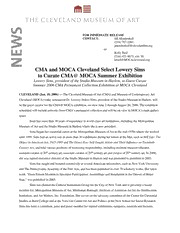
Exhibition - CMA@MOCA

IFRS 15 investment management companies
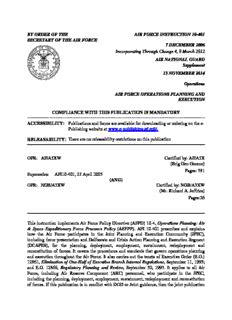
BY ORDER OF THE SECRETARY OF THE AIR FORCE AIR FORCE INSTRUCTION 10-401 7 ...
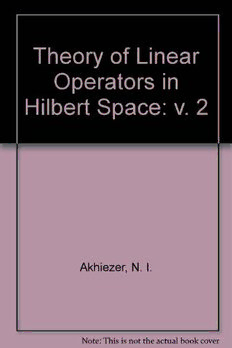
Theory of Linear Operators in Hilbert Space: v. 2

bruun rasmussen fine art + antiques
![Algebra [Lecture notes] book image](https://cdn-2.pdfdrive.to/media/content/thumbnails/247316f0-0428-4411-ac4b-9884dd394275.webp)
Algebra [Lecture notes]
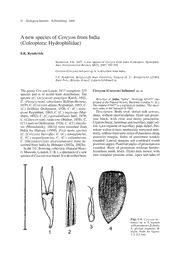
A new species of Cercyon from India (Coleoptera: Hydrophilidae)
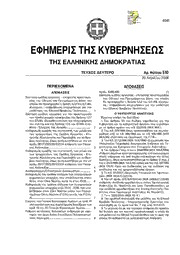
Greek Government Gazette: Part 2, 2006 no. 510

DTIC ADA495964: Foreign Military Sales Sole Source Exception: The Current USASAC Practice

Status of the smooth greensnake (Opheodrys vernalis) in North Carolina and Virginia

Tiếng Anh - Kỹ thuật đóng tàu (English for Shipbuilding)
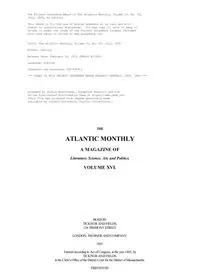
The Atlantic Monthly Volume 16 No 93 July 1865

Blood sugar-2017
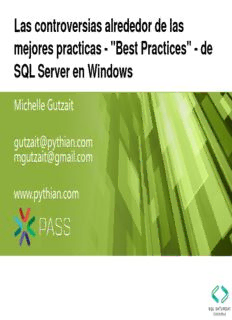
Las controversias alrededor de las mejores practicas - "Best Practices"
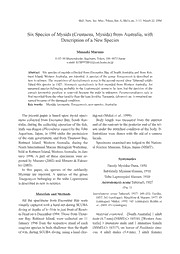
Six species of mysids (Crustacea: Mysida) from Australia, with description of a new species

jumbo_comics_124.cbr
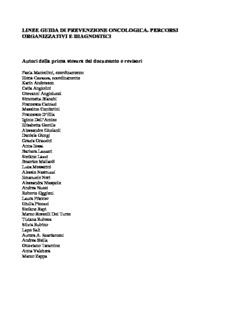
Cap 1 Lo screening oncologico

Goldvogel (Das verlorene Königreich - Band 2)

